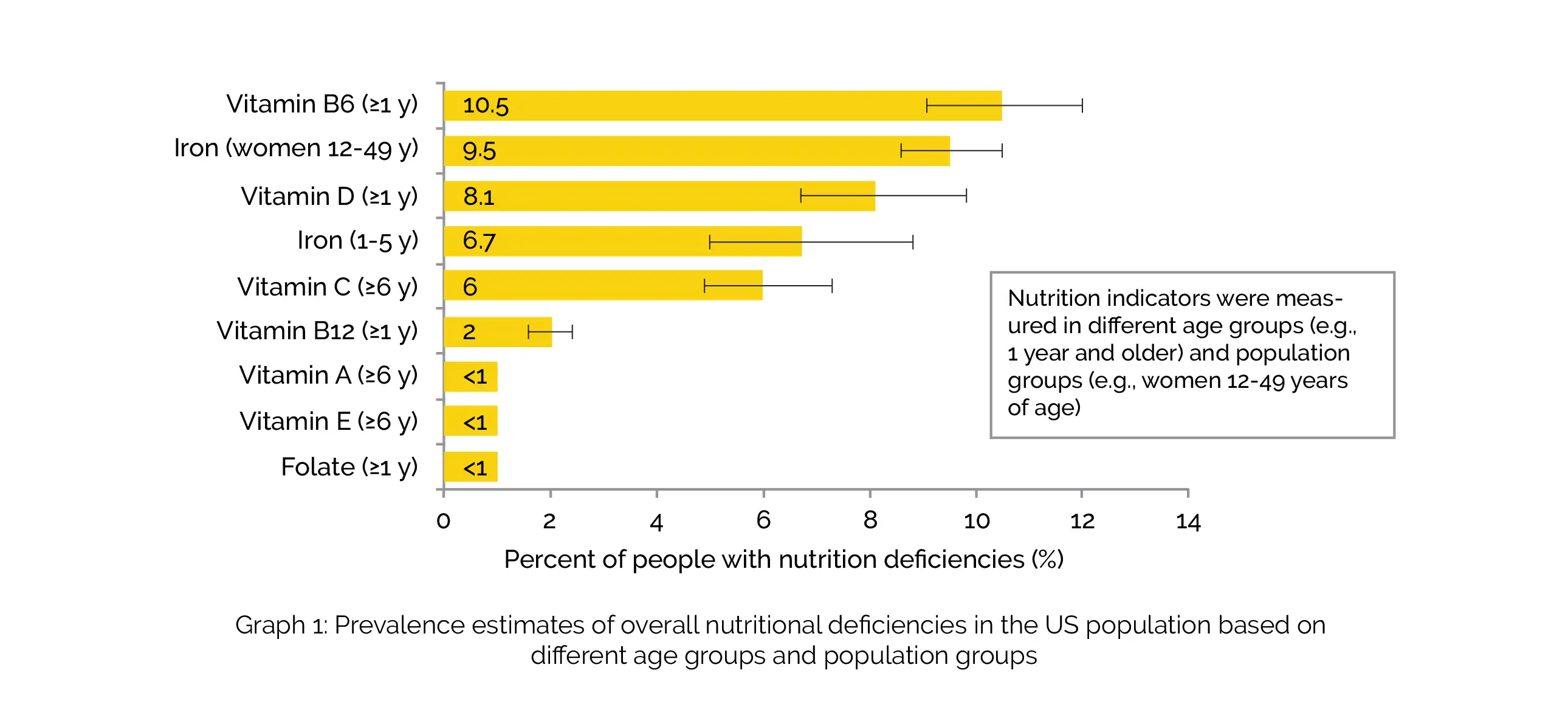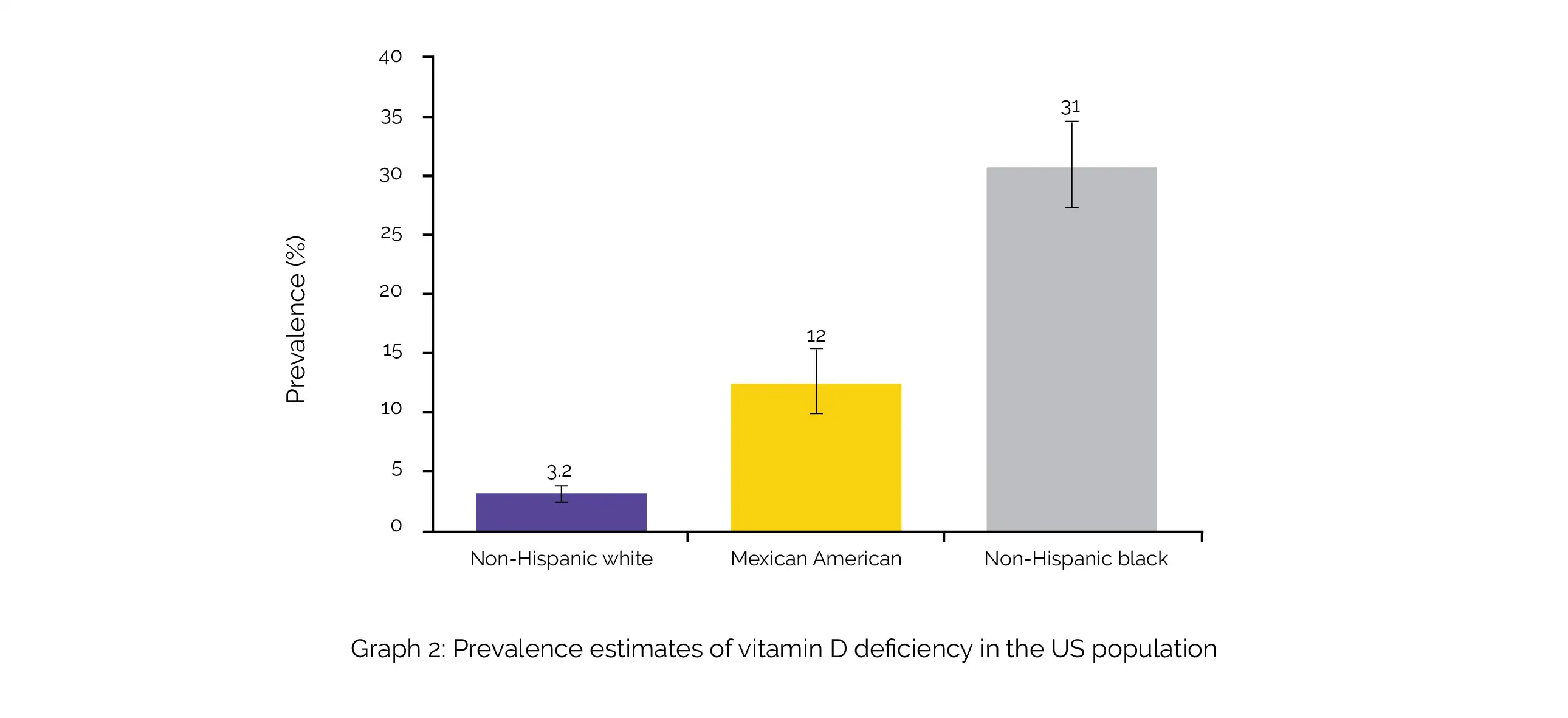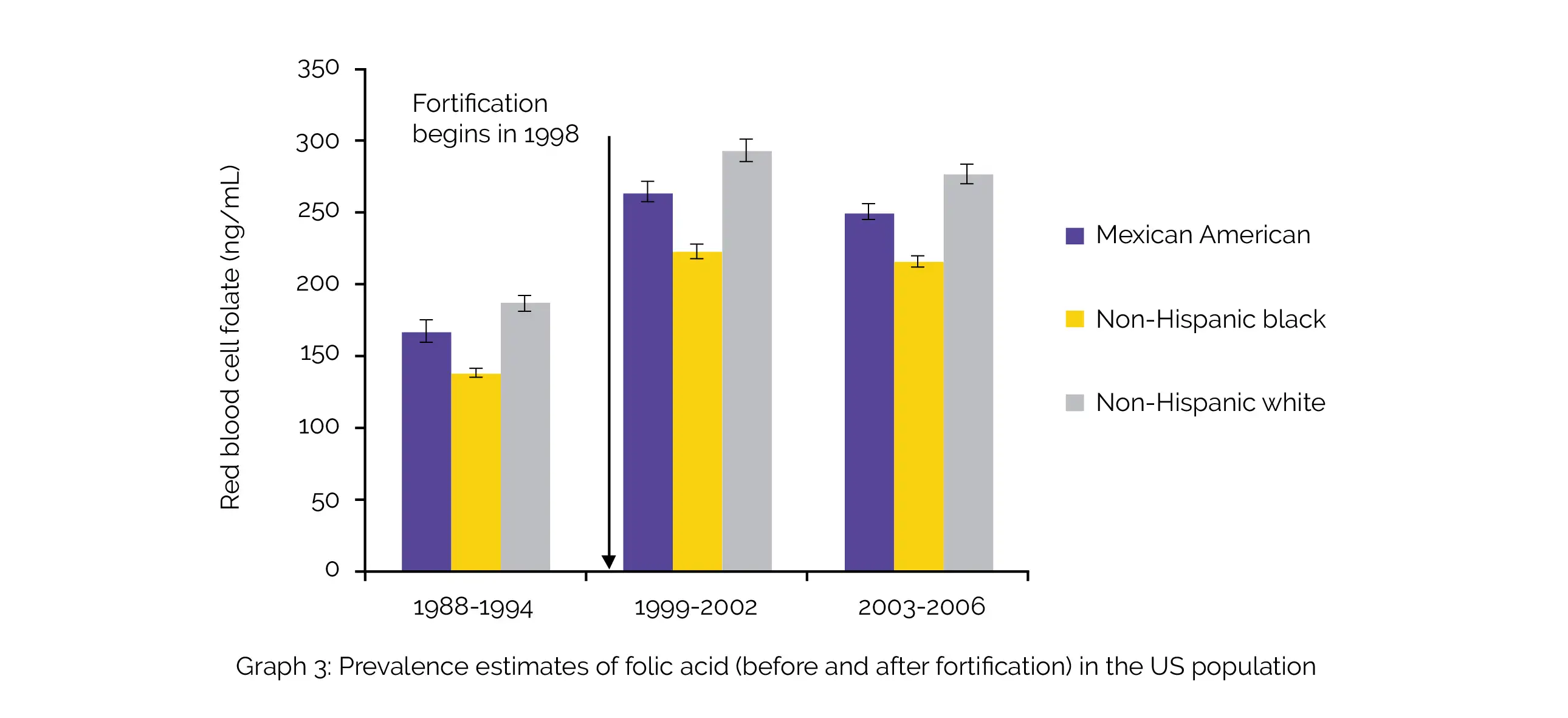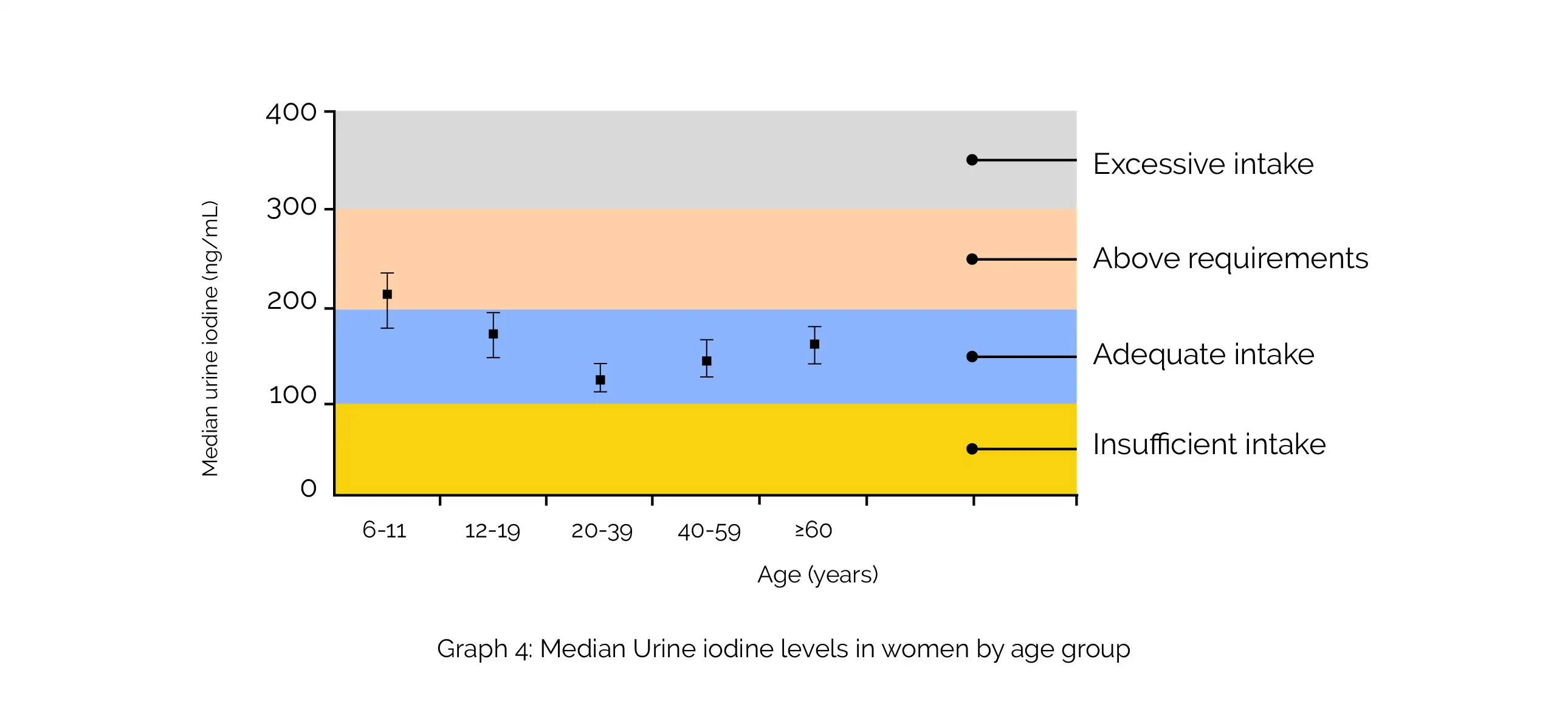Categories
Change Password!
Reset Password!


The latest findings on nutrient deficiencies in the US population underscore the urgent need for targeted interventions and improved nutrition status.
Recent revelations of the Second Nutrition Report by the Centers for Disease Control and Prevention (CDC) provided data about the nutrient deficiencies and nutrition status prevalent in specific populations (such as children, women of childbearing age, and minorities) in the US. The report evaluated 58 key biochemical indicators comprising vitamins (fat- and water-soluble), iron-status indicators, iodine, and other dietary biomarkers to evaluate the nation's health.
The outcomes from blood and urine samples from the people participating in National Health and Nutrition Examination Survey (NHANES) from the year 2003 to 2006 were accepted along with the biochemical indicators measured during 1999-2002. For the selected indicators, less than 10% of the American population exhibited nutrition deficiencies. On the other hand, deficiencies varied when considering specific demographics for most nutrition indicators and could be as high as approximately one-third of some population groups.
Ethnicity and race play a pivotal role in the occurrences of these deficiencies. For instance, non-Hispanic blacks (31%) and Mexican-Americans (12%) were highly susceptible to vitamin D deficiency than non-Hispanic whites (3%).

Status of Vitamin D …
There are few natural sources (fish-liver oils, mushrooms, egg yolks, and liver) of vitamin D or Calciferol. Sun’s ultraviolet rays help individuals form vitamin D in the skin. Typically, vitamin D is added to milk and other range of foods. As per the Dietary Guidelines, people pick foods that offer additional vitamin D. This is because, in American diets, vitamin D is a nutrient of concern.

Status of Folate or Folic acid…
Folate, an essential nutrient during pregnancy and infancy, is crucial for proper cell division and growth. The U.S. FDA requires folic acid to be added to all enriched cereal grain products to lower the likelihood of neural tube defects in newborns. The Dietary Guidelines suggest a daily intake of a minimum of 400 micrograms of folic acid for women who may become pregnant.

As shown in Graph 3, the blood folate levels increased to about 50% across race and ethnic groups. Before fortification (year 1998), about 10 to 12% of women of reproductive age did not have adequate folic acid. Following fortification, the folate deficiency declined to <1% in these females and the American population.
This milestone underscores the importance of fortification programs in improving public health.
Status of Iodine levels…
Iodine is a vital part of thyroid hormones that monitors normal growth and development. The US does not enforce mandatory iodized salt usage. People mostly get it from grains and dairy foods.
As per the American Thyroid Association, all prenatal vitamins and supplements contain 150 micrograms of iodine. Women in North America receive daily dietary supplements with 150 micrograms of iodine during the reproductive period and while nursing.

As shown in Graph 4, the lowest urine iodine levels were found in women aged 20-39 years compared to other age groups. Adequate iodine intake is particularly crucial during pregnancy to ensure optimal brain development in the fetus. The Second Nutrition Report introduces first-time measurements of novel biochemical indicators:
Centers for Disease Control and Prevention
CDC’s Second Nutrition Report: A comprehensive biochemical assessment of the nutrition status of the U.S. population
Comments (0)